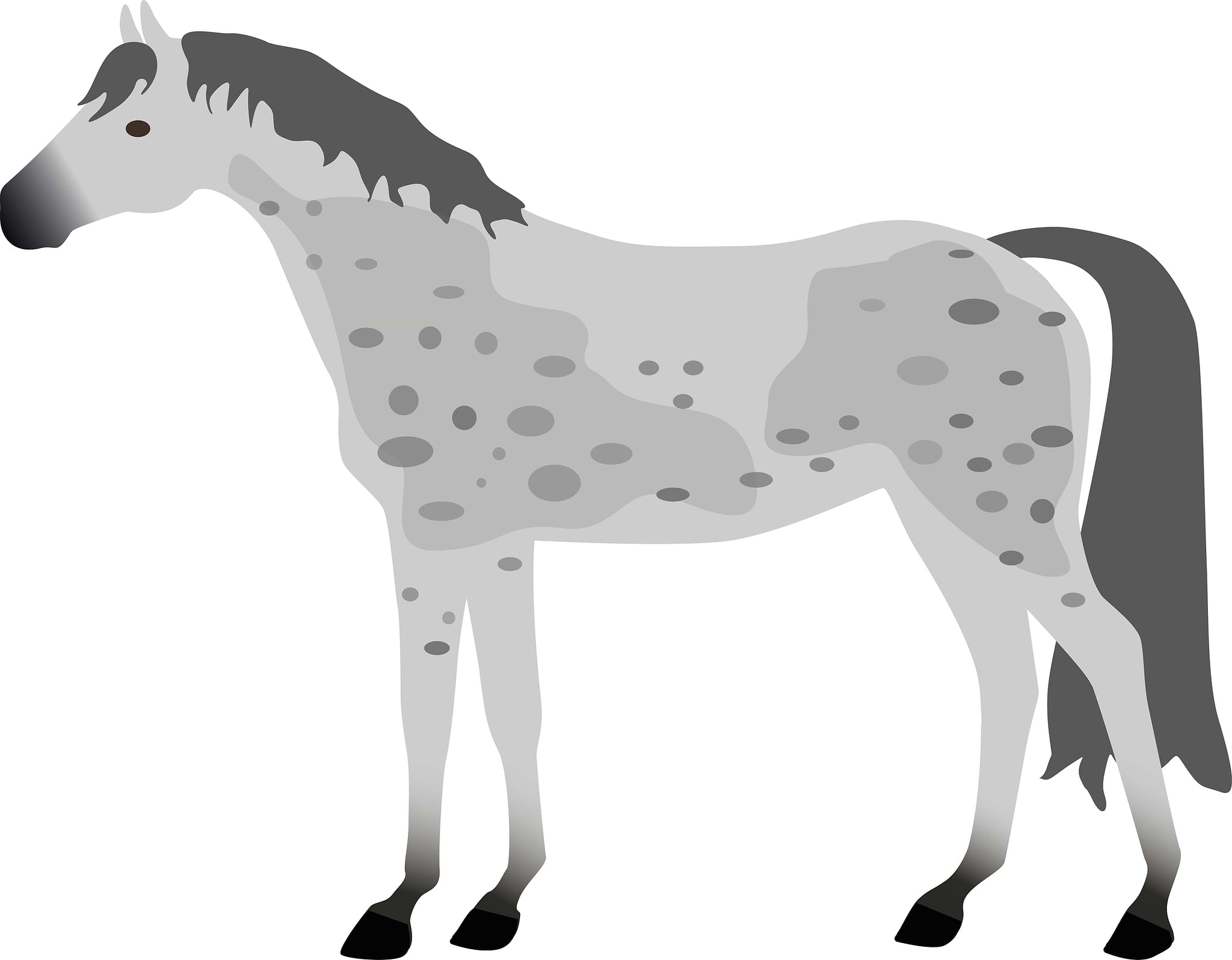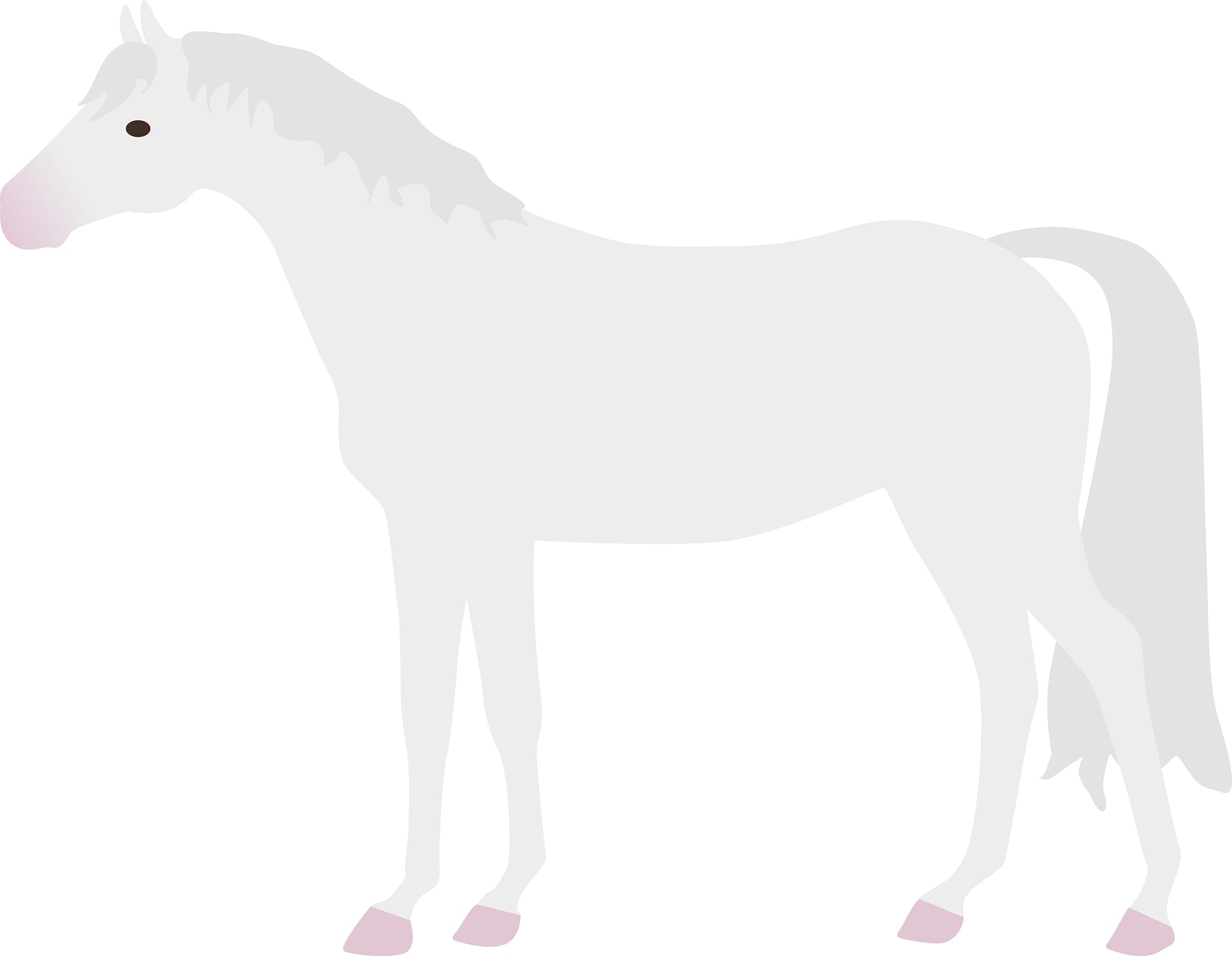Guide:
Horse Coat Colors
How many horse coat colors are there? What is a roan horse and what does a palomino look like? In this guide, we answer these questions and go through some of the most common horse coat colors.
Rebecca
Tue 1 Oct - 24

Guide:
Horse Coat Colors
How many horse coat colors are there? What is a roan horse and what does a palomino look like? In this guide, we answer these questions and go through some of the most common horse coat colors.
Rebecca
Tue 1 Oct - 24
All the different horse coat colors can seem confusing, to say the least. Not only because there are so many coat colors, but also because countries can differ in how they define and refer to the colors. Plus, the terms don’t always correspond to typical color names. For example, you might wonder what color a bay horse or roan horse is. In this guide, we go over this and look at some of the most common coat colors, as well as one of the rarest coat colors.
First of all, how many horse coat colors are there?
There is no simple answer to how many horse coat colors there are but they all come from the combination of red and black pigments. These two pigments result in the basic horse colors that can appear in lots of different shades. But the genetics that are behind these varied shades is not something we will get into here – instead, let’s take a look at the basic horse coat colors.
What are the basic horse coat colors?
The basic horse coat colors are black, bay, and chestnut. With basic horse coats, the entire coat is one color, but there are variations in how they look. For example, bays vary from a very light to a very dark brown. Let’s go through the basic coat colors.
Black horse
As you might guess when you hear the name, a black horse has a coat that is entirely black. Sometimes, it might be difficult to distinguish between a dark bay horse and a black horse, but the muzzle of a black horse will be completely black whereas a bay will have lighter hairs present.
Bay horse
A bay horse, as mentioned earlier, can vary from a very light to a very dark brown. They will usually have black points on their legs and ear tips and a black mane and tail. It is one of the most common horse coat colors.
Chestnut horse
Chestnut coats are red, but they can range in shade from light sorrel to liver chestnut with the liver chestnut coat color being so dark that it might almost be confused for a bay coat. It can help to look at the legs – if they are not black, it is a chestnut coat.
Some other common horse coat colors:
Palomino horse
Maybe one of the most easily recognized horse colors, palomino horses have gold-colored coats. The coat color is solid and can range from light to dark. The lighter shades might look almost white.
Roan horse
With roan horses, the coat has white hairs flecked throughout the coat. The coat color can range; a red roan is a chestnut horse with white hairs while – as the name hints at – a bay roan is a bay horse with white hairs throughout their coat. Roan horses are born with this gray coloring in their coat unlike grays whose coat gets white with age. On that note, let’s talk gray horses for a minute:

Gray horse
With gray horses, white hairs are flecked throughout the coat. This happens as they age because of a dominant gene that gradually causes depigmentation. So, gray horses can be born with any coat color, and it gets progressively whiter with age. You might also have heard about dapple-gray horses since a dappled coat is common with gray horses. But it can also be found in bays and chestnut horses – it’s just not as common. But what is a dappled horse? 
What is a dappled horse?
A dappled horse has, as you might guess, dapples in their coat. This means that they have a circular pattern in their coat where the circles are a different color than the coat. The dapples can be permanent or come and go. It’s sometimes said that it’s possible to encourage dapples by ensuring the overall good health of your horse. But it’s important to remember that not all horses can get dapples – it’s down to genetics. So, even if your horse is as healthy as can be, it won’t be able to get dapples if it doesn’t have the gene for it. 
What is the rarest horse coat color?
The rarest horse coat color is true white. The completely white coat is due to a lack of pigmentation. This means that the horses are born with this coat color rather than it gradually developing as they age.

As the saying goes, a good horse is never a bad color. But we would love to hear what you think – do you have a preference for certain horse coat colors? Are you used to hearing another term for some of these colors?
You can download a chart over the horse coat colors here.
Disclaimer: These are examples of horse coat colors. There are different terms for horse coat colors and definitions might vary slightly.